From ‘Moon Knight’ to ‘Everything Everywhere,’ Director Duos Dazzle — and Draw DGA Scrutiny (Column)

- Oops!Something went wrong.Please try again later.
- Oops!Something went wrong.Please try again later.
- Oops!Something went wrong.Please try again later.
- Oops!Something went wrong.Please try again later.
- Oops!Something went wrong.Please try again later.
Forget the Oscars. If you’re serious about staying on top of current cinema, you already realize this weekend’s big movie event is in theaters: “Everything Everywhere All at Once,” in which Michelle Yeoh plays a woman coming to terms with her life in multiple dimensions, marks the latest unclassifiable blend of anarchic poignance that Dan Kwan and Daniel Scheinert first unleashed with “Swiss Army Man.”
Daniels (they’d prefer we drop the “The”) are one of two filmmaking duos with new work out this week, as siblings Adam and Aaron Nee release their first studio effort “The Lost City” from Paramount. Some of the most beloved filmmakers working today include the Safdie brothers, the Russo brothers, and Phil Lord and Chris Miller; cineastes mourned at the Coen brothers’ breakup, but many have stepped up to fill the void. However, for the DGA, two is not better than one.
More from IndieWire
As more and more rising directors team up, little-known rules about that decision have suddenly posed a ubiquitous challenge — and it’s perfect fodder for our weekly column.

©United Artists / courtesy Everett Collection
MGM’s surprise hit “Dog,” in which Army Ranger Channing Tatum road trips with a deceased peer’s faithful Belgian Shepherd, should have heralded a new chapter in his career: Tatum served as half of a directing duo with writing-producing partner Reid Carolin (they wrote “Magic Mike”). Yet in doing the press rounds, he begged off future filmmaking collaborations. “Reid really directed this thing,” Tatum told me at the time. “I was just trying not to get bit in the face.”
This wasn’t just a humble act of peer-to-peer acknowledgement. Although the studio and the directors’ reps declined to comment, sources tell me Tatum and Carolin ran into problems with a DGA bylaw known as Article 7-208, aka “One Director To a Film.” The provision, which the guild established in 1978 to prevent producers and others from delegating tasks to director teams, requires that all DGA projects name a single director.
To qualify as an exception, director duos must apply to the union’s Western Directors Council and make the case that they are lifelong collaborators; one-offs shouldn’t even try. When the council rejected Tatum and Carolin’s case, they chose not to join the DGA and keep the joint credit.
“Dog” has enough charm and intrigue to make the case for a sturdy filmmaking hand, no matter whose it is. Given the fundamentally different jobs of acting and directing, and with Tatum as the film’s centerpiece, perhaps the council was unconvinced that the pair could truly function as a duo. However, this is only one of many cautionary tales resulting from the DGA rule.
In 2005, Robert Rodriguez quit the DGA after it refused to acknowledge Frank Miller as the co-director of “Sin City.” On the first “John Wick” movie, former stuntmen Chad Stahelski and David Leitch intended to co-direct Keanu Reeves through an ass-kicking comeback, but the DGA didn’t buy it; Stahelski directed and Leitch produced.
In 2018, “Crazy Ex-Girlfriend” writer-producer Audrey Wauchope claimed the DGA was biased against female co-directors when it declined to give her collaborator Rachel Specter a co-director credit on a show episode. When Bryan Singer was booted from “Bohemian Rhapsody” for a gajillion reasons, Dexter Fletcher finished the movie but the DGA ruled that only Singer could receive directing credit.
Most of the duos I spoke to said they felt nothing but support from the DGA, even with the daunting approval protocol. A few sang the praises of Joe and Anthony Russo, the Marvel-sanctioned pair who offered their support for others following the same path. Here’s their best advice as it was described to me: Duos have to make it clear they operate on the same wavelength to such an extent that anyone on the production could come to either of them with a request and receive essentially the same response.
There’s a compelling case for this scrutiny. Imagine the nightmarish scenario in which a studio decides that one director handles performances and the other deals with special effects, or one director gets hired to keep an eye on the other. Nobody wants filmmakers to face the same messes that the WGA must constantly sort out, where multiple drafts by numerous writers can lead to endless claims of authorship and no clear sense of who deserves what credit for the final outcome.
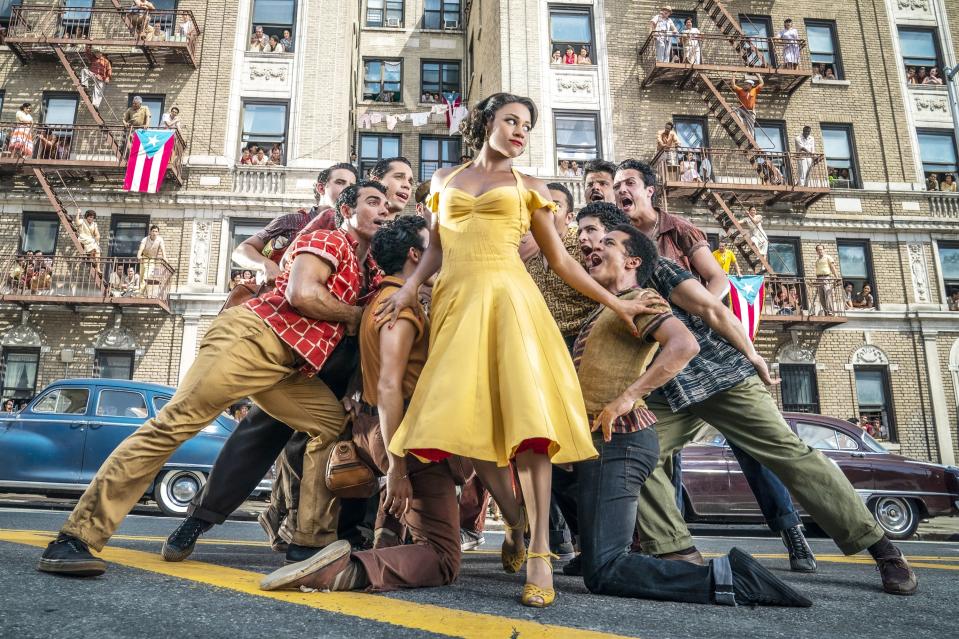
©20th Century Studios/Courtesy Everett Collection
Among the cautionary tales that predate the 1978 rule, “West Side Story” was chief among them. Co-directors Jerome Robbins and Robert Wise famously did not click because choreographer Robbins had never directed a movie before, while Wise was, well, Robert frickin’ Wise. Under pressure from producer Harold Mirisch, they shared the credit. For the 2021 “West Side Story,” 34-year-old dance wunderkind Justin Peck delivered killer choreography, but he sure as hell didn’t share the director’s chair with Steven frickin’ Spielberg.
Perhaps Tatum, who did some of his finest work for Joel and Ethan Coen by tap-dancing for dames in the underappreciated “Hail, Caesar!,” assumed he could follow their path. But the Coens didn’t formalize their directorial partnership until 2004’s “The Ladykillers” (prior to that, they traded off). Now that Joel’s gone solo with “The Tragedy of Macbeth,” even the most revered directing duo on the planet would have to apply for a DGA waiver if they wanted to reunite with the union’s support.
Unsurprisingly, the uncompromising Daniels ran into DGA troubles of their own. After the scatological bout of surrealism that was “Swiss Army Man” transformed their careers, Scheinert cobbled together resources for the loopy crime comedy “The Death of Dick Long.” The DGA told him that by doing so, the pair could not return to joint projects; he just ignored it.
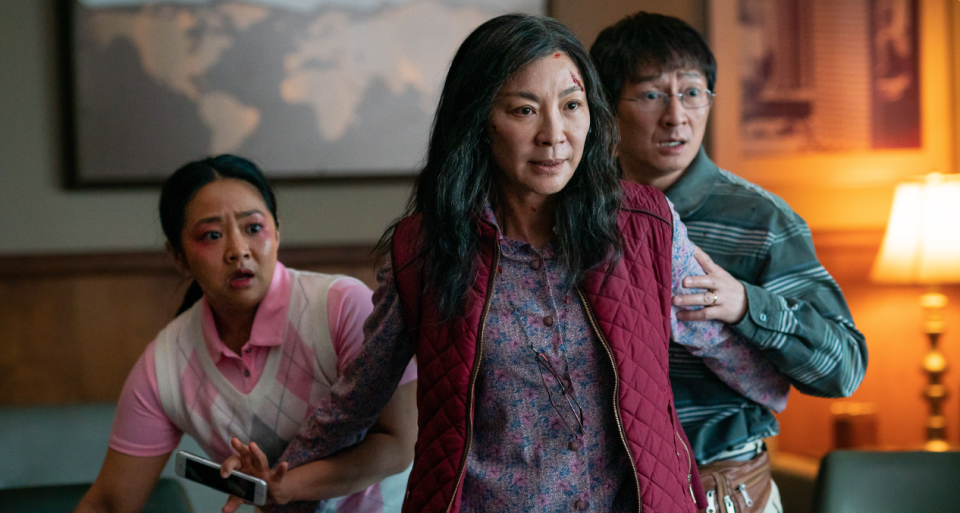
SXSW
When I spoke to Daniels in Austin during SXSW (where their new film opened the festival), the memory elicited sheepish grins and awkward glances.
“Every duo I’ve talked to has had a very interesting struggle with the rules,” Kwan said. “We’re so pro-union, very proud to be a part of one, and the DGA takes care of us. They’re the best. But one of the weird things about the duo rule is that once you direct outside of the duo, technically that is broken and you can’t do it again.”
Scheinert chimed in. “So we got in big trouble and we promised to never do it again,” he said. “They said no, so we had to apply again. For a minute we thought —“
Kwan again: “I was going to direct and he was going to produce.”
That would have baffled Daniels’ growing fan base. Scheinert looked embarrassed by the ordeal. “I thought I’d ruined it,” he said. “I knew about the rule, but I don’t like authority, so when they called me and said, ‘Just so you know, you’re going to get your waiver revoked,’ I was like, ‘No, I’m going to make the movie that just got greenlit.’”
Eventually, the pair turned to some of the biggest director duos including the Russos, Seth Rogen and Evan Goldberg, and Jonathan Dayton and Valerie Faris, to appeal to the DGA. “It was like a ‘Duo Avengers’ moment,” Scheinert said. “We’re so grateful to them that we got the waiver back because we like working together.”
It shows in the results: “Everything Everywhere All at Once” feels like an otherworldly collage conjured by one director jotting down crazy ideas for an alternate reality across the room before tossing it to his peer, who scribbles all over it and tosses it back. (No spoilers, as the hodgepodge of “Matrix”-like storytelling, kung-fu pastiche, and unexpected emotional wallop must be experienced firsthand.) “This movie would’ve been impossible without doing it together,” Kwan said. “It definitely required two brains. Maybe it needed five brains.”
Other duos echoed that point: Their chemistry works so well that they can’t imagine doing anything else. Many filmmakers happened into co-directing, only to stumble through practical challenges as the scale of their projects increased.
This included Aaron Benson and Justin Moorhead, who took a break from promoting their episodes of “Moon Knight” this week to hop on Zoom and explain to me how they made it through four low-budget genre movies (including the astounding philosophical horror movie “The Endless”) without any awareness of the DGA rule.
It wasn’t until they were hired to direct an episode of Jordan Peele’s “The Twilight Zone” reboot that Benson and Moorhead learned they had to appeal to the union. When they joined a Western Council conference call, they were surprised to find the DGA members assigned to assess them included Rogen and Jason Reitman. “We personally didn’t know anyone that famous,” Moorhead said. “It was such a weird thing. But they were genuinely trying to figure out if we were a co-directorship.”
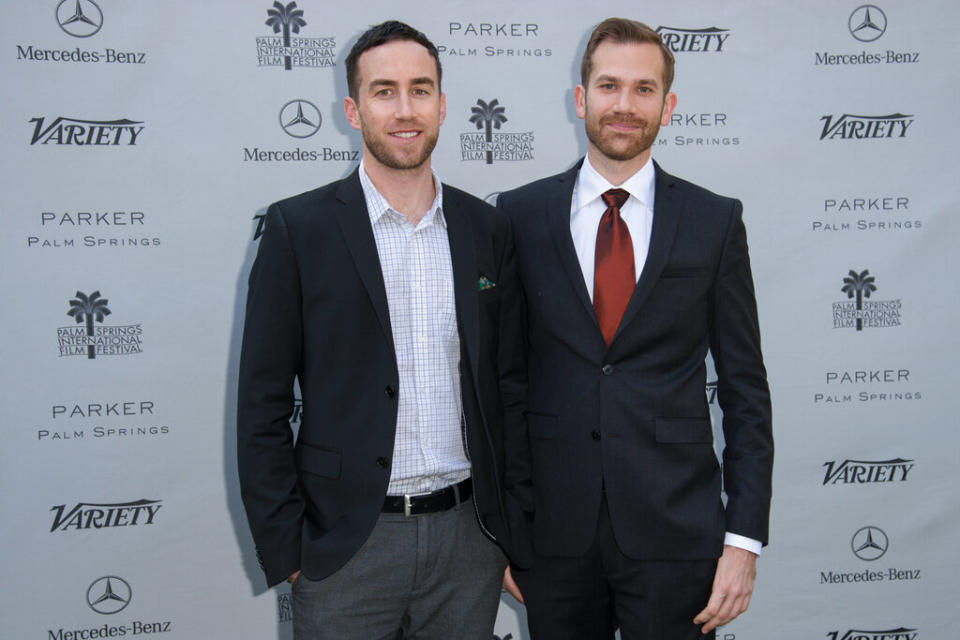
Rob Latour/Invision/AP
Benson and Moorhead, whose conspiratorial comedy-thriller “Something in the Dirt” might break the internet when it opens later this year, said they were fine with committing to a collaborative relationship. “There’s no intention for us to work separately,” Benson said. “We don’t feel shackled by the DGA.”
Of course, people can change. Follow the credits on Mark and Jay Duplass and it’s clear that the siblings’ partnership dissolved after they finished directing “Togetherness” on HBO. As the pair moved in different acting directions and their individual sensibilities evolved, they had solo directing credits on “Room 104” but shared writing credits. (The Duplass brothers declined to comment.)
The Nees told me they went before the DGA to plead their case after studio opportunities came their way; they’re now deep into prep on Sony’s “Masters of the Universe.” Their DGA council experience included late “7 Up” director Michael Apted. “That was the most stressful pitch we ever did, and we’d already done pitches in front of major studios,” Aaron Nee said. “Leading up to it, we were like, ‘What if they say no?’”

Paramount
Like others, they had a hard time imagining a solo undertaking. “Having a directing partner is helpful in both working on a small film because you wear so many hats,” Aaron said. “It helps reduce the exhaustion of how many roles you have to fill. On a larger film, it’s about absorbing all the questions coming at you. We even divide up emails.”
Adam agreed. “We know a lot of solo directors and assume it must be the loneliest job in the world,” he said. “You have to communicate your vision to so many people. We need a partner in crime.” Like the Russos, they are now looking into the potential of producing for the next generation of directing duos. “I think we can divide and conquer on that,” Adam said. (Note: “The Lost City” stars Channing Tatum; imagine the shop talk on that set.)
Anyone considering the dual path needs to know this: Even DGA-certified pairs almost certainly take a pay cut. There are no union rules about this, but it has become industry standard for directing duos to receive a single director salary divided evenly between them. Most duos I spoke with are resigned to this, but one famous example still irks a former pair to this day.
In 1992, 20-year-old twin directors Albert and Allen Hughes formed a partnership as The Hughes Brothers and were getting ready to direct “Menace II Society,” which would become a hallmark of Black cinema. The pair conceived the story as a tough and powerful look at the casualties of gang violence and the bystanders drawn into its orbit; with producer Darin Scott and writer Tyger Williams, they sold the idea to New Line. Ultimately, Albert Hughes told me this week, the brothers received $50,000 each. Williams and Scott each made twice as much.
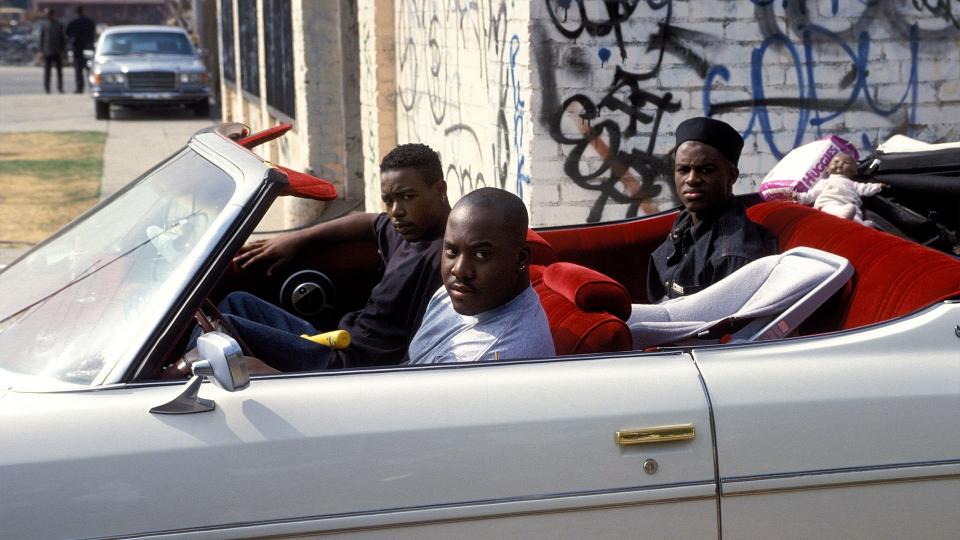
“We said, ’It’s our fucking movie. We should each get $100,000,” Albert said from a set in Budapest, where he’s currently directing a TV show. “They said no. So after taxes we each made $20,000 and that was it. Still, to this day, we’ve made no backend, none of that bullshit. Not a dime.”
As Albert recalls, the union sent someone to the set of “Menace II Society” to watch them work and approve their partnership. “It’s really strange,” he said. “It’s like The Doobie Brothers. If there are five guys in the band, it’s not up to the union what to call them.”
Albert said he and his brother dissolved their partnership after “The Book of Eli” in 2011 in part because they didn’t sync up as well as they used to, but also because the union began insisting they include both of their names in the credits instead of “The Hughes Brothers” — a symbolic shift that struck Albert as a diss to the singularity of their partnership. That led to some difficult conversations.
“I valued the partnership and my brother didn’t,” he said. “If I’m being dirty, there are identity problems with twins. We’re different people.” But then came a new revelation. “When we started working separately, I realized, ‘Whoa, I could’ve had this much more money if we had been compensated earlier,” he said.
More recently, Allen has expressed a desire to reunite with his brother behind the camera. “I can see why he has said that,” Albert said. “If things were right within the partnership, I think I’d be fine within that partnership and making less money.” (Allen declined to comment.)
Toward the end of this week, I spoke to Jocelyn DeBoer and Dawn Luebbe, the comic performers-turned-filmmakers whose surreal midnight suburban satire “Greener Grass” broke out of Sundance 2019. Since then, they have directed a few TV episodes with solo credits, but as they looked to secure financing for bigger projects they realized the need for the DGA meeting. “We’ve been wearing matching outfits for years just in anticipation of that presentation,” DeBoer said. “We’re lucky to be in this new generation of directing duos where the DGA is recognizing partners.”
DeBoer and Luebbe met as performers in Upright Citizen Brigade and eventually co-wrote a web series. Directing was a natural outgrowth of their existing collaboration. “We always say we’re in the edit as we’re writing,” Luebbe said. “I can’t imagine prepping without debating it, looking up references and so forth with another person.”
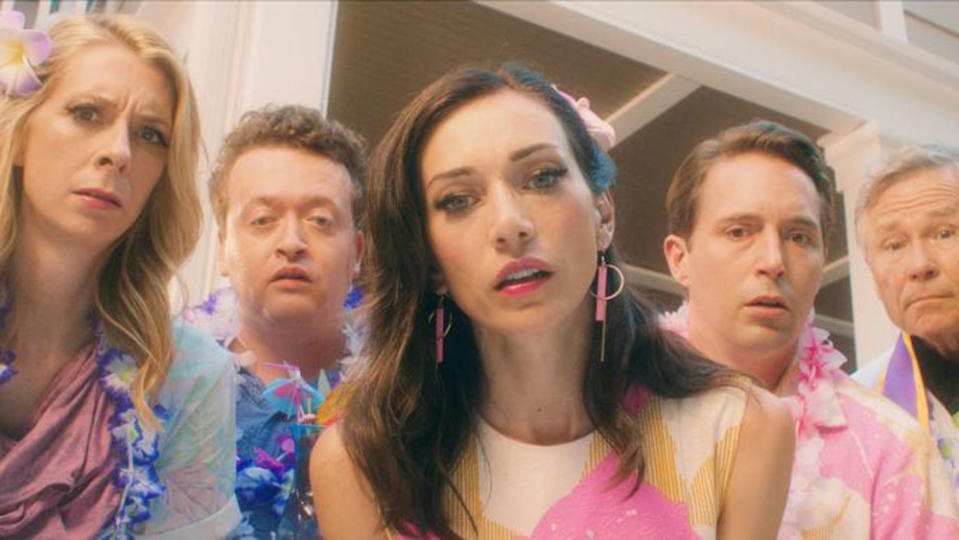
They were unperturbed by the money issue, at least for now. “Why would anybody not hire a directing pair if you can pay them the same price and you literally get two of us?,” DeBoer said. “You absolutely get more. But I’m not about to argue that we should make more because of that.”
That assertion may be worth revisiting down the line. In the meantime, I implore readers to see these movies and contemplate the plurality of leaders behind them. Singular vision or not, these are talented filmmakers who should maintain those collaborations and navigate the rules accordingly to keep up the good work. Yes, even Channing Tatum and Reid Carolin.
Then again, perhaps these scenarios necessitate a stronger conclusion. DGA’s “one director to a film” rule may require further assessment. Did the union do a disservice to Tatum? Should it formalize equal pay for all directors on a single project? Reach out to me and let me know where you stand: eric@indiewire.com
See you on the other side of Oscar season, where more pressing questions of filmmaking sustainability await.
Best of IndieWire
New Movies: Release Calendar for May 13, Plus Where to Watch the Latest Films
The Best Sex Scenes of the 21st Century Ranked, from 'Midsommar' to 'Titane'
The 45 Best Sci-Fi Movies of the 21st Century, from 'Tenet' to 'Dune'
Sign up for Indiewire's Newsletter. For the latest news, follow us on Facebook, Twitter, and Instagram.

